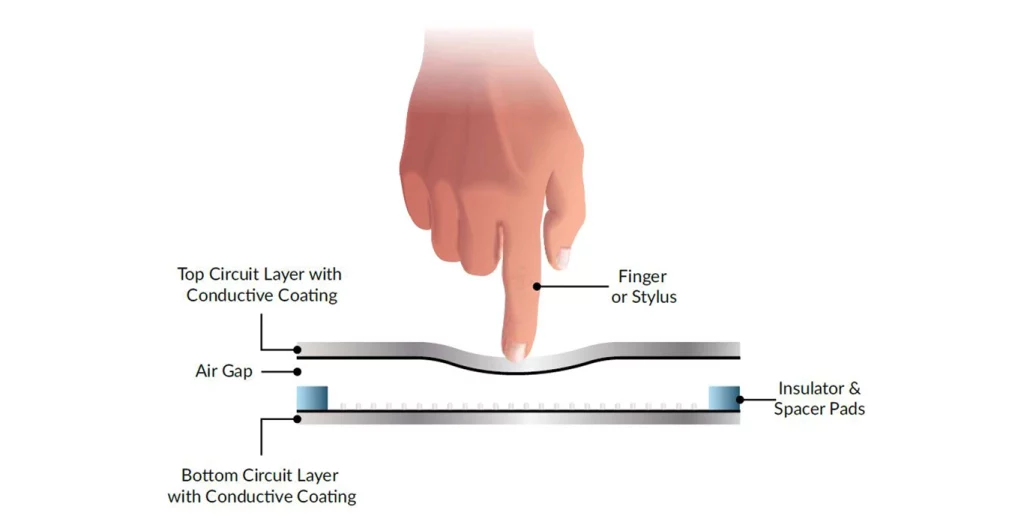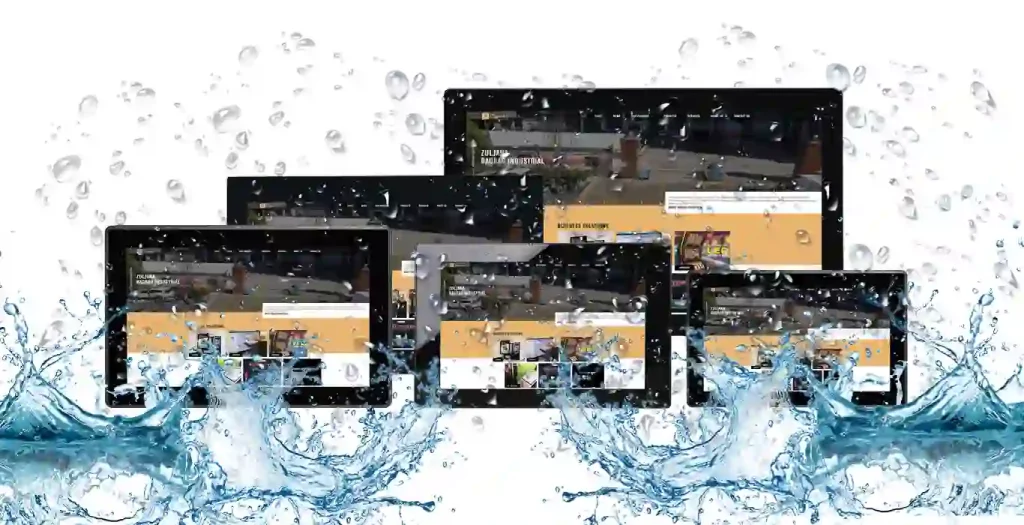A touchscreen monitor is a type of display that allows the user to interact with the computer by touching the screen. Industrial Touch Screen Monitors are becoming increasingly popular, as they offer a more intuitive and natural way to interact with computers. However, there are several different types of touchscreens monitors available on the market, each with its own set of advantages and disadvantages. In this article, we will take a look at four of the most popular types of touchscreen monitors: capacitive, resistive, industrial, and IP65-rated touch screens.

History of Touchscreen Displays
The touchscreen is not a new technology. The first touchscreen was developed way back in 1965 by E.A. Johnson. However, it was not until the early 1980s that touchscreen displays began to gain mainstream popularity. The early touchscreen displays were used primarily in point-of-sale terminals and ATMs.
In the 1990s, touchscreen technology saw a breakthrough with the advent of touchscreen laptops. The first touchscreen laptop was released in 1991 by IBM. However, it was not until 2007 that touchscreen laptops became widely available, with the release of the Apple MacBook Air.
In recent years, touchscreen monitors have become increasingly popular for both home and office use. As touchscreen technology has become more affordable and advanced, it has found its way into several different markets.
Types of Touchscreens Displays
There are four main types of touchscreens displays: capacitive, resistive, industrial, and IP65-rated touch screens. Let’s take a closer look at each type of touchscreen:
Capacitive Touchscreen Displays
A capacitive touch screen monitor display consists of a glass panel that is coated with a conductive material. When a user touches the screen, the conductive material creates an electrical field that is used to track the position of the user’s finger. Capacitive touchscreen displays are very accurate and responsive, and they can be used with a stylus or a finger.

Advantages:
- Very accurate and responsive
- Can be used with a stylus or a finger
- No pressure is required
Disadvantages:
- Does not work with gloves or other non-conductive materials
How do Capacitive Touchscreens work?
Capacitive touchscreen displays work by detecting the electrical properties of the human body. When you touch the screen, your body’s natural capacitance is transferred to the touchscreen display. This change in capacitance is registered by the processor of the device as a touch pcs.
Capacitive touchscreen displays are made up of a thin sheet of glass that contains a grid of hair-thin lines of conductive metal. The grid lines in one direction are called the driving lines and provide a constant electric current. Lines perpendicular to the grid lines are called the sensing lines, and they detect this electric current.
At every point where the driving lines and sensing lines cross each other, they create an electrostatic field registered as neutral by the processor of the device. When you touch the screen, your body’s natural capacitance is transferred to the touchscreen display. This change in capacitance is registered by the processor of the device as a touch event.
Capacitive touch screen monitor 32 inch displays are highly accurate and responsive, making them ideal for use in industrial and commercial applications.
Resistive Touchscreen Displays
A resistive touchscreen display consists of a glass panel that is coated with transparent conductive material. The conductive material is separated from the glass by a thin layer of air. When a user presses on the screen, the conductive material makes contact with the glass and completes an electrical circuit. This process is known as mutual capacitance.

Advantages:
- Works with gloves and other non-conductive materials
- Pressure is required to activate the touchscreen, which can be beneficial in outdoor or industrial environments
Disadvantages:
- Less accurate and responsive than capacitive touchscreen displays
- Requires constant pressure to function properly, which can be tiring for the user
Uses Of Resistive Touch Screen
Resistive touchscreen displays are commonly used in industrial and medical applications. They are also popular in point-of-sale terminals, as they can be used with a stylus or a finger.
Industrial Touchscreen Displays
Industrial touch screen monitor displays are designed for demanding environments. They are typically made of reinforced glass and can withstand high temperatures, vibration, and shock. Industrial touchscreen displays are also available with a variety of touchscreen technologies, including resistive, capacitive, and surface acoustic waves and touch screen vending machine.

Advantages:
- Designed for demanding environments
- Can with stand high temperatures, vibration, and shock
- Available with a variety of touchscreen technologies
- Disadvantages:
- More expensive than consumer touchscreen displays
Industrial Touchscreen Displays for Harsh Environments
If you need to run an application 24 hours a day, seven days a week, and the touchscreen is subjected to heavy use and harsh environments; a standard touchscreen is not suitable for that kind of use. For instance, CNC machines are used in industrial environments where touchscreen monitors are always put to the test. An industrial touchscreen display is a durable and reliable touchscreen that can withstand the harsh environment and abuse.
Advantages:
- Durable and reliable
- Can withstand the harsh environment and abuse
Disadvantages:
- More expensive than consumer touchscreen displays
- Not as accurate or responsive as capacitive touchscreen displays
IP65 Touchscreen Displays
IP65 touchscreen displays are designed for use in harsh environments. They are sealed against dust and water, and they can operate in temperatures ranging from -40 to +60 degrees Celsius. IP65 touchscreen monitor displays are available with a variety of touchscreen technologies, including resistive, capacitive, and surface acoustic waves.

Advantages:
- Sealed against dust and water
- Can operate in temperatures ranging from -40 to +60 degrees Celsius
- Available with a variety of touchscreen technologies
Disadvantages:
- More expensive than consumer touchscreen displays
Conclusion
Touchscreen displays have come a long way in recent years, and they are now being used in a variety of different markets. When choosing a touchscreen display, it is important to consider the environment in which it will be used and the type of touchscreen technology that is best suited for your needs.
Touchscreen displays have become increasingly popular in recent years due to their accuracy, responsiveness, and affordability.




